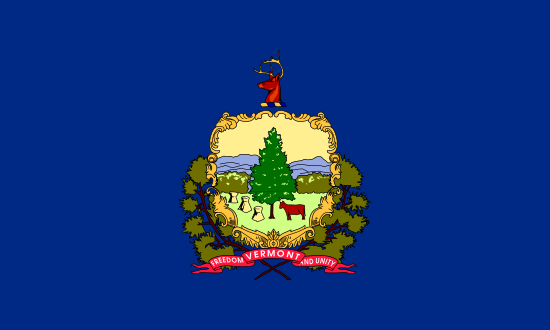
Vermont
- Statehood Year:
- 1791
- Capital:
- Montpelier
- Largest Cities:
- Burlington, South Burlington, Colchester
- Abbreviation:
- VT
Vermont is a state in the Northeast region of the United States, known for the Green Mountains, maple forests, and scenic valleys. It has a population of 648,278, making it the 49th most populated state in the country. The capital city is Montpelier. Vermont has a tourism and agriculture-based economy.